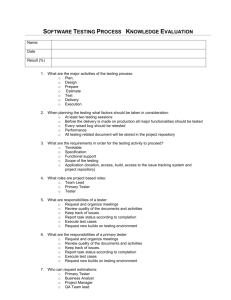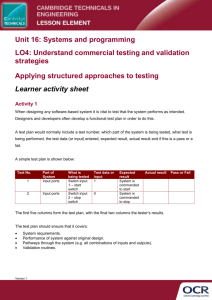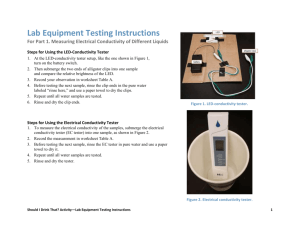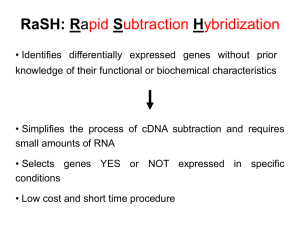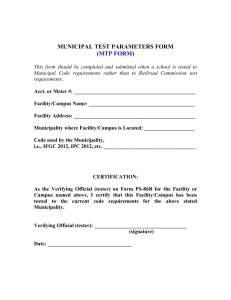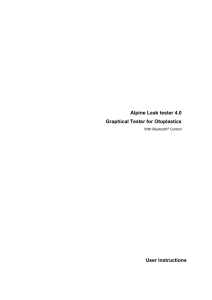Strategies sheet
advertisement
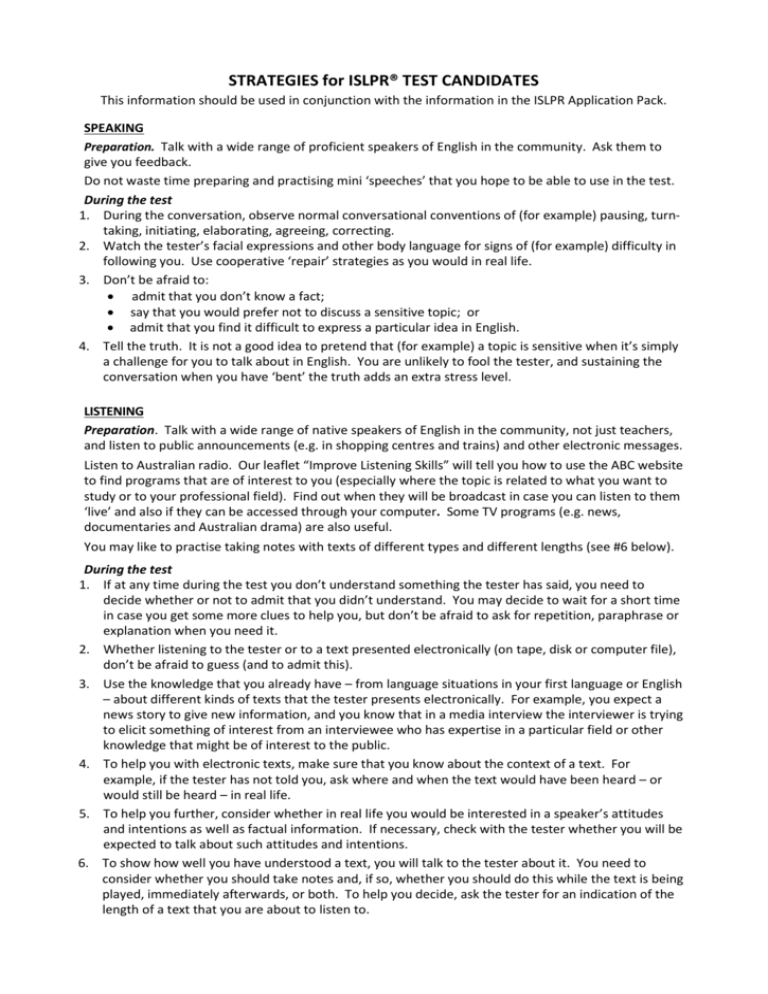
STRATEGIES for ISLPR® TEST CANDIDATES This information should be used in conjunction with the information in the ISLPR Application Pack. SPEAKING Preparation. Talk with a wide range of proficient speakers of English in the community. Ask them to give you feedback. Do not waste time preparing and practising mini ‘speeches’ that you hope to be able to use in the test. During the test 1. During the conversation, observe normal conversational conventions of (for example) pausing, turntaking, initiating, elaborating, agreeing, correcting. 2. Watch the tester’s facial expressions and other body language for signs of (for example) difficulty in following you. Use cooperative ‘repair’ strategies as you would in real life. 3. Don’t be afraid to: admit that you don’t know a fact; say that you would prefer not to discuss a sensitive topic; or admit that you find it difficult to express a particular idea in English. 4. Tell the truth. It is not a good idea to pretend that (for example) a topic is sensitive when it’s simply a challenge for you to talk about in English. You are unlikely to fool the tester, and sustaining the conversation when you have ‘bent’ the truth adds an extra stress level. LISTENING Preparation. Talk with a wide range of native speakers of English in the community, not just teachers, and listen to public announcements (e.g. in shopping centres and trains) and other electronic messages. Listen to Australian radio. Our leaflet “Improve Listening Skills” will tell you how to use the ABC website to find programs that are of interest to you (especially where the topic is related to what you want to study or to your professional field). Find out when they will be broadcast in case you can listen to them ‘live’ and also if they can be accessed through your computer. Some TV programs (e.g. news, documentaries and Australian drama) are also useful. You may like to practise taking notes with texts of different types and different lengths (see #6 below). During the test 1. If at any time during the test you don’t understand something the tester has said, you need to decide whether or not to admit that you didn’t understand. You may decide to wait for a short time in case you get some more clues to help you, but don’t be afraid to ask for repetition, paraphrase or explanation when you need it. 2. Whether listening to the tester or to a text presented electronically (on tape, disk or computer file), don’t be afraid to guess (and to admit this). 3. Use the knowledge that you already have – from language situations in your first language or English – about different kinds of texts that the tester presents electronically. For example, you expect a news story to give new information, and you know that in a media interview the interviewer is trying to elicit something of interest from an interviewee who has expertise in a particular field or other knowledge that might be of interest to the public. 4. To help you with electronic texts, make sure that you know about the context of a text. For example, if the tester has not told you, ask where and when the text would have been heard – or would still be heard – in real life. 5. To help you further, consider whether in real life you would be interested in a speaker’s attitudes and intentions as well as factual information. If necessary, check with the tester whether you will be expected to talk about such attitudes and intentions. 6. To show how well you have understood a text, you will talk to the tester about it. You need to consider whether you should take notes and, if so, whether you should do this while the text is being played, immediately afterwards, or both. To help you decide, ask the tester for an indication of the length of a text that you are about to listen to. In real life, we normally take notes about a text only if it is important to remember something and we feel that we can’t trust our memory. Because of the effects of test anxiety and because of the particular way that you have to demonstrate your understanding in an ISLPR test, you might decide to take notes about a text even though you would not do this in real life. However, you should also consider that the act of note-taking may interfere with your comprehension, particularly if you focus on details that are not key (e.g. the exact amount of money stolen as opposed to less than $10). While notes may be taken in your first language, we recommend that you use English. Switching between languages can interfere with comprehension. Also, you might forget to tell the tester something that you understood; if you have noted the information in English, the tester can read it and take it into account. 7. It is possible that you will already know information that is relevant to the text but not actually in the text. Use this prior knowledge to help you understand the text but remember that the tester is interested in the ideas in the text, not in your prior knowledge. READING Preparation. Read texts that are of interest to you (and especially those related to your studies or professional field) in a wide range of publications intended for native speakers of English (see the Guidelines page in the Application Pack). Create the right level of challenge for yourself; for example, you might start with free local papers and progress to metropolitan and national daily papers and then weekly publications (e.g. Time Magazine). Consider the writers’ attitudes and intentions as well as the factual information. Practise the following different approaches to reading, both in your first language and in English: scanning for a particular piece of information needed or specified; reading extensively for the gist or main ideas; and reading intensively for precise meanings and relationships between meanings (see #1). Consider how your reading speed differs with these different approaches and which strategies are appropriate. For example, if you are scanning, it is generally not a good idea to underline or use a highlighter because it will slow you down too much. Practise underlining or using a highlighter in ways that help you to ‘attack’ different kinds of texts. For example, if the text is a news story or article that gives different opinions, you might highlight the names of the different people, or just linkers such as “however” or “as well”. Consider highlighting to link different parts of the text. For example, if the same person is quoted more than once, you might draw a line in the margin or even across the text to link these places. A lot of people underline or highlight too many words. Develop skills in paraphrasing (reporting the same ideas but in different words); these will help you in your academic studies or professional work as well as in your test (see #6 below). NB Many of the points in the section on LISTENING above are also relevant to READING. During the test 1. Make sure that you understand the task that the tester has given you; this will indicate which approach to reading you should use. With any text, you may be given different kinds of tasks; for example, you may be asked to read a whole text extensively and then a key section of it intensively. 2. You can ask how long you may take to read a text silently before talking about it, but normally the tester will give you only an approximate time, because individual reading speeds vary greatly. The tester is interested in whether your reading speed is appropriate for the task, and that you use – and do not overuse – appropriate strategies (see Preparation above). 3. Use graphic features (e.g. photos, headlines, print size) to help you understand the ideas of the text. 4. Use a topic (introductory) paragraph to help you to understand the main idea of a text and topic sentences to help you to understand the main idea of paragraph s. 5. The tester may ask you to make inferences. 6. You do not always have to maintain eye contact with the tester in this part of the test. It’s generally OK to look back at a text when you are talking about it. 7. If the tester asks what a text – or a section of it – is about, you need to change the words when you answer. If you simply repeat the original words, you will not have proved that you have understood it. 8. When the tester asks a question about the text, answer as directly as you can. For example, if the tester asks you for the main point of a particular paragraph, there is no need to start “In my opinion the main point of the third paragraph is ……………..……. .” WRITING Preparation. Practise writing in English every day. Write texts as outlined in the Guidelines page of the Application Pack so that you know what they look like in your handwriting and you don’t waste time counting words during the test. Practise writing about 400 words in 60 minutes, including time for planning and for checking and editing. Do not try to guess what your tasks will be and practise only these. Also do not prepare ‘chunks’ of language – other than very short formulae such as greetings – that you hope you can use for almost any topic. When you write with a word-processor, use the spell-check and grammar-check functions constructively (e.g. to keep track of the mistakes that you make and to help you reflect on why you make them). Check with your teacher or a modern textbook for basic formating conventions (e.g. indicating new paragraphs) and for editing conventions (e.g. for inserting a piece of text) in hand-written texts. During the test 1. The task sheet indicates the audience (who you are writing for) and why you are writing, as well as the topic and the text type (e.g. report, ‘letter to the editor’). All these things are important, so check with the tester if you are not sure. 2. Where appropriate, try to imagine yourself in the situation outlined on the task sheet. 3. Use the white space on the task sheet to make notes to plan your work but not to write a full draft that you hope to copy into the writing booklet. 4. When planning, be realistic about what you can express in English. 5. When you refer to ideas from the task sheet, change the wording if possible but don’t think that you must use synonyms to avoid repeating your own words. 6. Don’t be afraid to use short, simple sentences in either the shorter or longer task. 7. The number of paragraphs that you use in either the shorter or longer task should depend on the way that you group your sentences into main points. There is nothing magic about five paragraphs. 8. Don’t be afraid to use very short paragraphs in either the shorter or longer task. 9. Not all paragraphs start with a topic sentence, even in academic writing. 10. Use linkers such as “moreover” when necessary but only when necessary. 11. Avoid clichés such as “every coin has two sides”. 12. To delete a piece of text, consider simply putting a line through it rather than using liquid paper or an eraser. 13. When checking, try reading to yourself what you have written so that you ‘hear’ in your head if it sounds right. GENERAL 1. Avoid ‘emotional blackmail’ (e.g. telling the tester how important it is for you to ‘pass’ the test). 2. Don’t ask the tester how well you have done. © David Ingram September 2013
